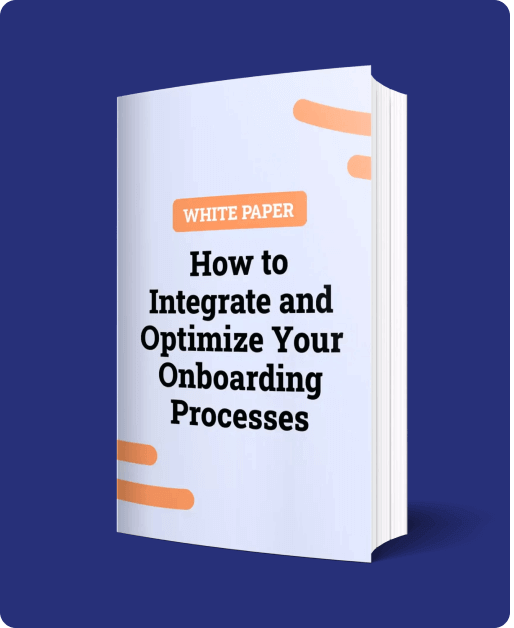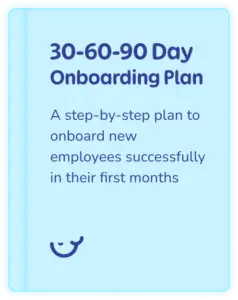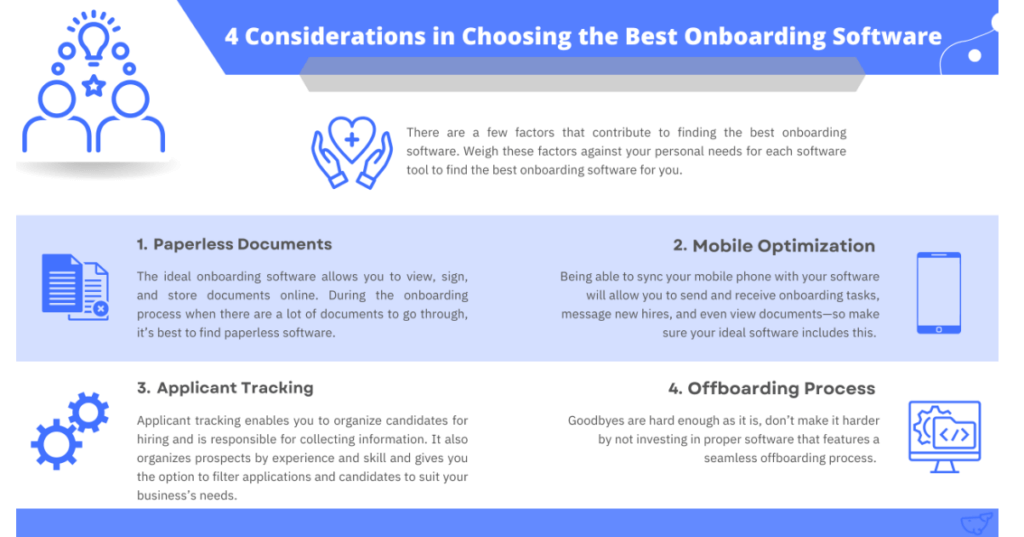What is remote onboarding?
New employee onboarding! What an exciting time! The first day! Swag! Coffee and the meet-the-team breakfasts for a start. Not to mention the following months as new team members are onboarded onto the team.
But what about remote team members? How do organizations make remote employee onboarding work?
Today’s businesses collaborate across boundaries to remain competitive. Working in a dispersed setting presents several obstacles. These include communication, collaboration, trust. lack of social interaction, distractions of work-life balance and not to mention cultural barriers and accountability.
But with 36.2 million of Americans expected to be remote by 2025, these challenges have to be overcome.
Onboarding personnel remotely doesn’t have to be hard work and it doesn’t have to end in disaster.
Why remote onboarding matters?
- Employee expectations have changed: When it comes to the post-pandemic world, your new employees expect an extra helping hand — 81% are now looking for a supportive leadership style, while 72% expect extra digital and remote work training.
- Replacing employees is expensive: With great onboarding processes boosting employee retention by a whopping 82%, it’s worth investing in your systems — especially when the cost of a bad hire can set you back anywhere between 16-20% of their annual salary.
- Great onboarding directly impacts productivity: At the end of the day, you’re here to boost productivity and increase revenue. Lucky for you, companies with a standard onboarding process improve new-hire productivity by up to 50%.
Once upon a time...A Remote Employee Onboarding disaster story
Once upon a time, a new employee named Sarah was hired for a remote position as a software engineer. The company had switched to a fully remote work model, including onboarding new hires virtually.
Although her SWAG had not arrived, on her first day, Sarah eagerly logged into the designated video conferencing platform at the scheduled time for her onboarding session. However, she encountered numerous technical issues right from the start.
Despite the technical glitches, the HR representative continued with the onboarding process, but the lack of visual aids and clear communication made it incredibly challenging for Sarah to grasp the information being shared. The HR representative had to repeat instructions multiple times, which caused frustration for both parties.
To make matters worse, there was a lack of coordination among the different teams involved in the onboarding process. Sarah was supposed to have virtual meetings with her team lead, a mentor, and other team members to get acquainted with the company’s projects and processes. However, due to miscommunication and scheduling conflicts, these meetings kept getting delayed or canceled without proper notification.
As a result, Sarah found herself feeling isolated and disconnected from her new colleagues. She struggled to get answers to her questions, and the delays in meeting with her team made her uncertain about her role and responsibilities. It seemed like nobody had a clear plan for her onboarding, and she felt left to figure things out on her own…
Don’t wait for this to happen next time you onboard a new team member remotely!
Remote Employee Onboarding starts long before onboarding
Employee onboarding starts looooong before anyone begins their first day! In fact, it starts from how you write the job post, to how you distribute the job post (PS we suggest using job posting software), how you interview, and how you communicate prior to a new team member joining.
You will give new team members insight into onboarding and the work culture from the moment you start recruiting. Case in point from the people team at Whale below;
Remote employee onboarding: 7 Ways to avoid a disaster
#1: Start with a plan
According to a report by SHRM, new team members need about 90 days to prove themselves in the new job and become effective. For this reason, it’s important to start with a 30-60-90 plan so the organization and team members alike know what to expect.
Having a well-defined plan provides a structured framework for the onboarding process. It helps the remote employee understand what to expect and how to navigate their first days and weeks in the new role. It ensures consistency in the onboarding experience across different remote employees. It also results in
Time and Resource Efficiency: Having a plan streamlines the onboarding process. It enables HR personnel and managers to allocate their efforts effectively, reducing duplicated work and minimizing the chances of missing critical steps.
Engagement and Productivity: A structured onboarding plan facilitates remote employees’ engagement and productivity from the beginning. It helps them feel supported, connected, and integrated into the company’s culture, values, and goals. This, in turn, contributes to higher job satisfaction and better performance.
- Trust! Having a plan in place builds trust as new team members quickly settle into a routine and defined outcomes.
Here are some tips for making your remote employee onboarding process as seamless as possible:
Have a checklist ✅
Start with an internal checklist to ensure all processes are followed and to minimize disasters such as the case with Sarah above.
- Send a welcome email or letter to the new hire with details of the onboarding process. Don’t forget to mention how excited you are to have them join the team!
- Set up the new remote team member’s email!
- SWAG! Yes it still matters! Even more so in the case of remote team members. Everyone (no matter what they might say) loves a hoodie, mug and journal.
- Share an employee handbook with basic policies like the dress code or working schedule
- Get all necessary payroll forms and documents signed before the starting date
- Send equipment too before the start date where necessary
- Give the new team member access to necessary tech and company tools
- Ask the new team member if they have any questions about the onboarding process
- Schedule all meetings with calendar requests ahead of time.
- Prepare a meet-the-team social post to make them feel super welcome!
Have an orientation schedule 📅
An orientation schedule is all about scheduling! Make sure team members are informed about new team members’ arrivals. Ensure that the necessary calendar invites are sent to all parties. And make sure that the new team hire is included in all necessary meetings. There’s nothing worse than a newbie realizing that they missed a meeting because they weren’t invited.
Don’t forget things like;
- The availability of necessary equipment: Ensure that remote employee has all of the tools they require to do their job, including a workstation, software licenses, and any specialized equipment. Plan for the transportation of the equipment in advance to avoid delays.
- Technical setup and support: Ensure that the worker’s technical set-up, like internet connectivity and access to company systems, is in good working order. Give them the information they need to get in touch with IT support if they encounter any issues.
#2: Communicate
Communication is the cornerstone of successful remote onboarding. It is advisable to build strong lines of communication from day one to ensure remote employees adhere to company policies and don’t feel lost while working. They must feel connected and informed. Here are some steps to follow:
- Pick your channels: Establish channels for ongoing communication and support, such as regular check-ins with managers or HR representatives, virtual office hours, and a designated point of contact for any questions or concerns.
This is a critical point so we’re going to say it again! You should have a strategy to ensure that if an employee has a problem during onboarding, you can assist them in resolving it.
Many companies assign onboarding buddies, over and above HR, to new hires for additional support. If you decide to take this approach make sure to pair your new team member with a friendly, helpful member of the team who’ll be there to help them through. Make sure the company point of contact can be reached, and that new remote hires know where to reach them.
- Documentation and knowledge sharing: Everybody has some unique skills that can be shared among colleagues for the betterment of the organization. Encourage remote employees to share their style of working with the team. Knowledge-sharing sessions even just once a month, can prove helpful for the overall progress of employees. It also ensures that remote employees feel as important and heard as others.
#3: Leverage Technology to your Advantage
In the remote world, technology is the glue between the team member and the organization.
There are various onboarding platforms and software available that will streamline the process. Companies should utilize technology for remote employee onboarding to streamline the process, enhance efficiency, and ensure a smooth transition for new hires. Tech enables companies to provide virtual training, interactive orientations, and digital access to necessary documents and resources, regardless of the geographical location of employees.
And while the tools are an important part, new hires need to feel empowered in using them. This means you may need to consider new tool training when onboarding new team members.
#4: Focus on Culture
It is an important task to ensure that remote employees know the culture and values of the company. One can be communicated to them during orientation in an engaging manner. It can help remote employees stick to the company’s mission and vision.
Every organization follows a specific process for onboarding employees. It is challenging to follow the same process for remote onboarding but ensure you do. Remote employees must feel like they are an integral part of the organization, irrespective of their work location.
Here’s how to integrate culture effectively:
- Virtual welcome ceremony: It is exciting to host a welcome ceremony where there is an online get-together to discuss the mission, vision, and values of the organization. Indulging a leadership team and relevant team members can make a great impact.
- Cultural ambassadors: Assigning cultural ambassadors or mentors to remote employees helps. These members can introduce newcomers to the organization’s values and answer queries.
- Inclusivity and diversity: Promote inclusivity and diversity within the company’s culture. Ensure that remote employees understand the organization’s commitment to establishing an inclusive and diverse workplace.
- Recognition and rewards: Develop a recognition and rewards program that acknowledges remote employees’ contributions. This can serve to increase morale and provide a sense of togetherness.
#5: Training Matters
Onboarding doesn’t end on the first day! When onboarding new team members, it’s important to consider the training and development needed to excel in their positions. This includes onboarding training, ongoing training and transitional training.
So, ensure the following:
- Role-specific training: Provide intensive training targeted at the specific role of the employee. Video sessions, online courses, or one-on-one training sessions are all options.
- Skill development: Encourage continuous learning and skill development by providing remote employees with access to online courses and webinars. They can also get access to tools that will help them improve their skills and stay updated in their field.
- Mentorship and coaching: Offer mentorship and coaching sessions to remote employees. This can help people be successful in their new employment as well as develop goals.
#6: Set Expectations
20% of employee turnover occurs within the first 45 days of employment, meaning many new hires leave a new job before they officially complete onboarding.
So you’re going to want to set clear expectations from the get-go!
A new hire should have a clear picture of what success looks like for the first 100 days and beyond.
Harvard Business Review Tweet
You’d want to know who you’re marrying before you marry them right? It’s the same principle here.
Clear expectations help remote employees understand what is expected of them, align their efforts with organizational goals, and ensure a smooth transition into their new role. For example, during onboarding, it is important to clearly communicate the expected working hours, availability for virtual meetings, and preferred modes of communication to establish a consistent remote work routine and facilitate collaboration with colleagues in different time zones.
This will also give team members an idea of the culture within the team.
#7: Clearly Define Roles and Responsibilities
When responsibilities are defined, it is easier for everyone to understand what they are expected to do and when. This helps ensure clarity and communication.
Be sure to give new remote hires a clear job description that outlines the specific tasks, duties, and expectations associated with the role. This description should include information about reporting lines, team collaborations, and any relevant performance metrics. Additionally, it is essential to have open and transparent communication between new hires and their manager, ensuring that roles and responsibilities are discussed and clarified during virtual meetings or onboarding sessions.
PS. Don't forget to create feedback loops
Remote employees can quickly get alienated and potentially irritated without feedback resulting in reduced productivity and increasing turnover rates.
It is why focusing on feedback from your remote teams is critical. This will not only keep staff engaged, but it will also foster team loyalty and ensure continuous improvement. Making feedback a priority is one of the most significant ways to ensure this occurs on your team.
Set aside time for feedback to ensure everyone understands what type of input is expected of them.
For example, someone may need clarification about how frequently they should perform a certain task. Or they may want to give feedback with regard to how a certain process can be improved.
Managers can use video technology like Slack or Zoom to quickly interact through video chat. It makes it much simpler for both parties involved since they can see each other’s facial emotions and body language.
This will make your team members feel like they are part of the same team and that their effort is appreciated. It will also assist them in improving their talents and feeling more confident in their abilities.
💡 Don’t forget to ask for onboarding feedback!
Regularly evaluate the remote onboarding process and seek feedback from both remote employees and stakeholders involved. Identify areas for improvement and implement necessary adjustments to enhance the onboarding experience for future hires.
Bottom line?
In today’s changing landscape, a robust onboarding process to build an effective remote team is crucial. It brings long-term success to both remote employees and the organization.
Onboarding represents the perfect opportunity to establish a lasting relationship with new team members. The secret to making it work is to ensure you have a process in plan long before onboarding starts.
Great remote onboarding serves as the initial connection between the value your company brings, the skills of incoming team members, and the collective opportunities that can be realized. It sets the foundation for a collaborative journey, aligning company objectives with individual capabilities and paving the way for joint success and innovation.
Here’s to success!

How to Integrate and Optimize your Onboarding Processes
In this ebook “How to integrate and optimize your onboarding processes”, we give you everything you need to understand and implement the three most important types of training.






